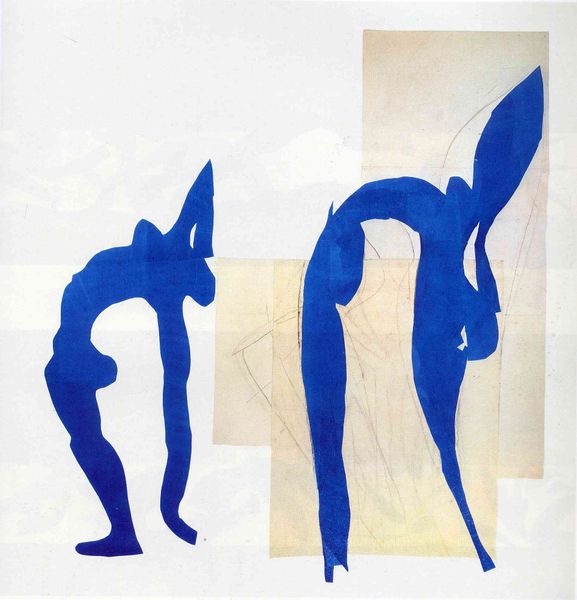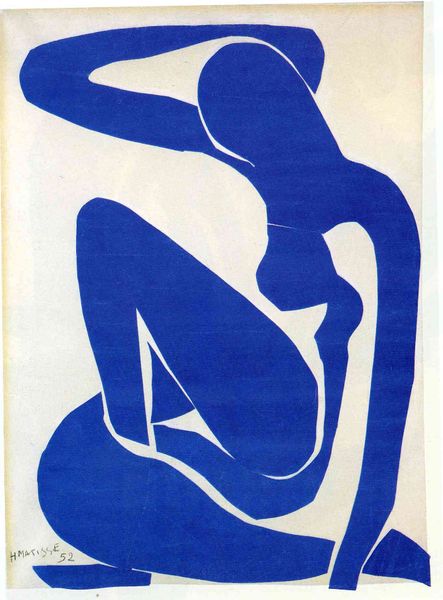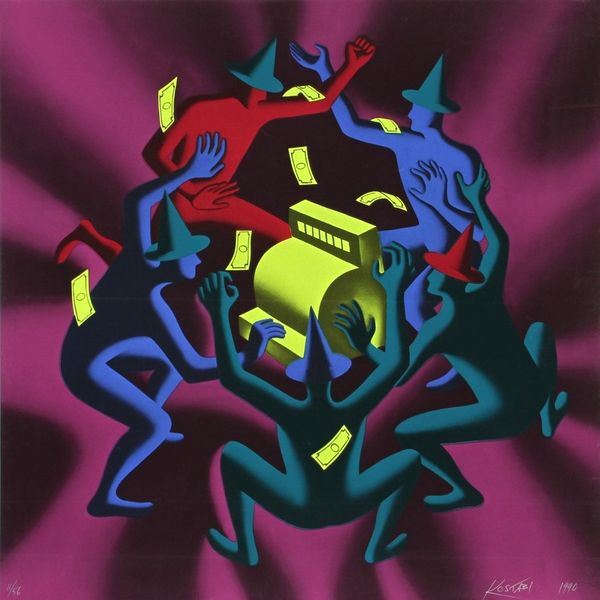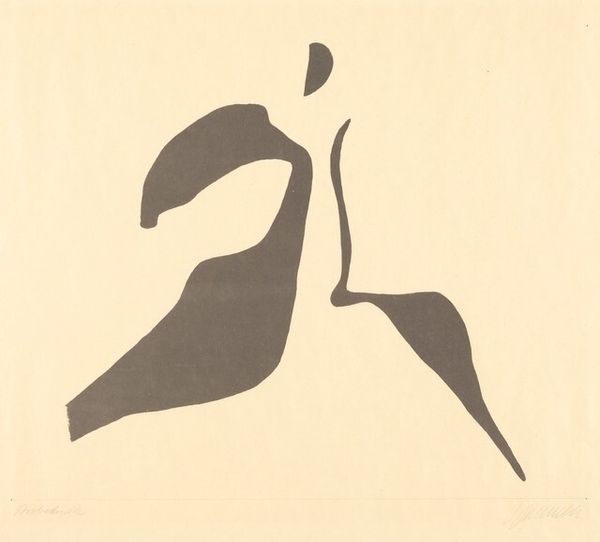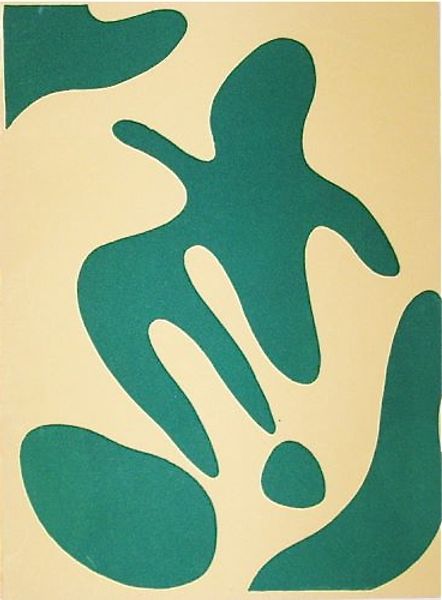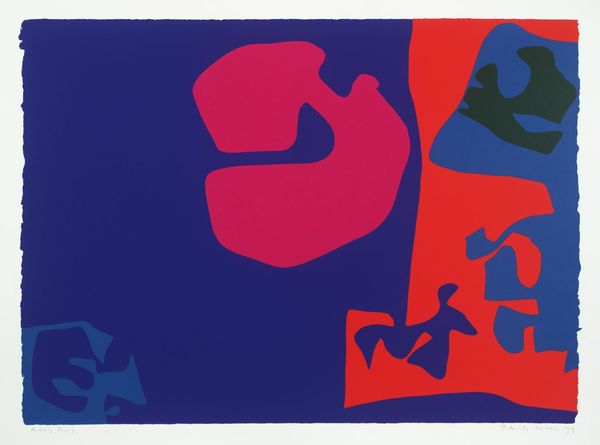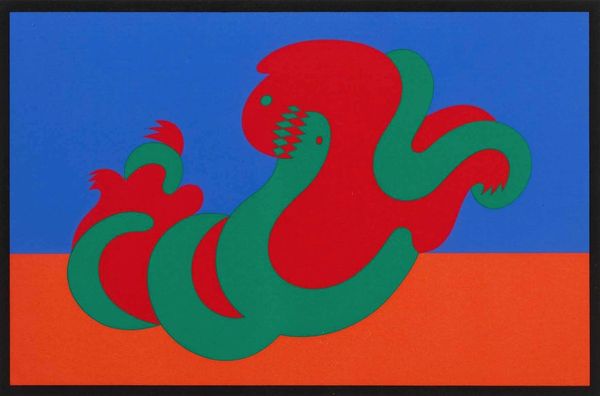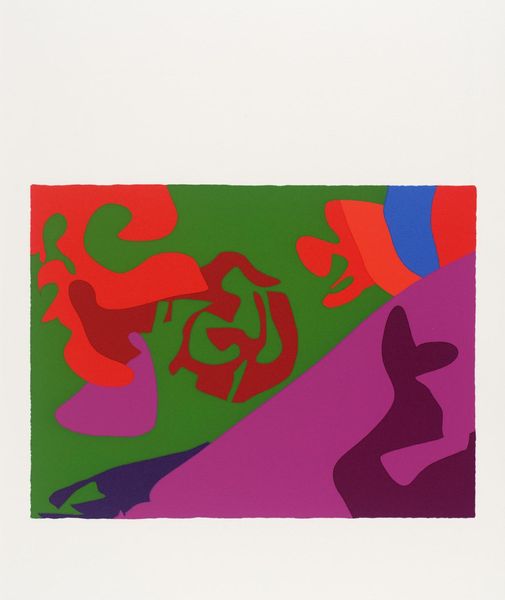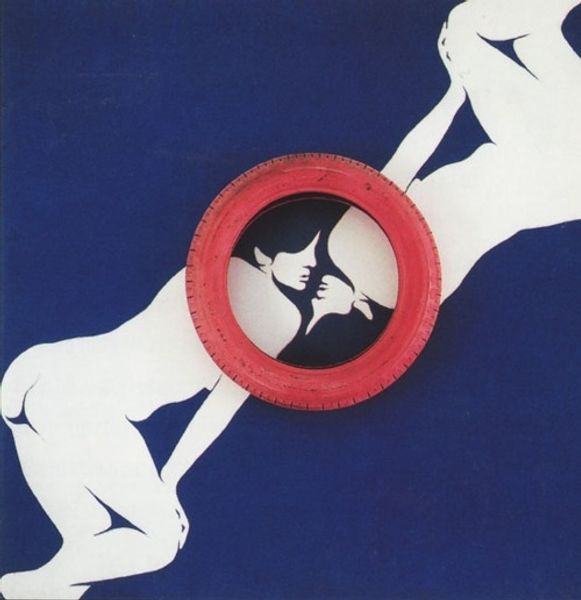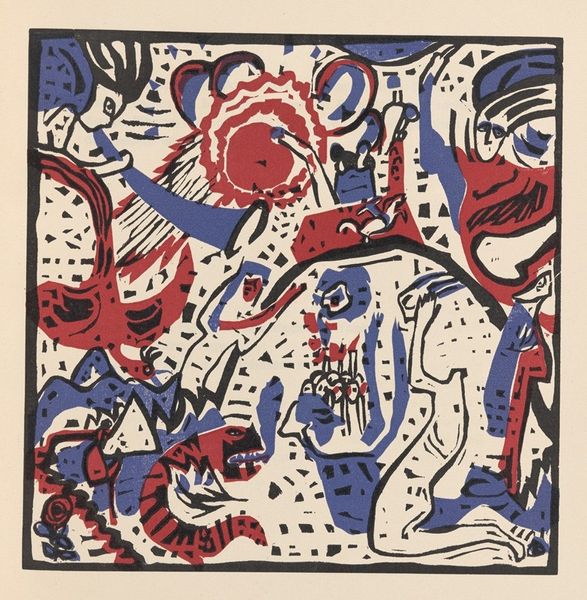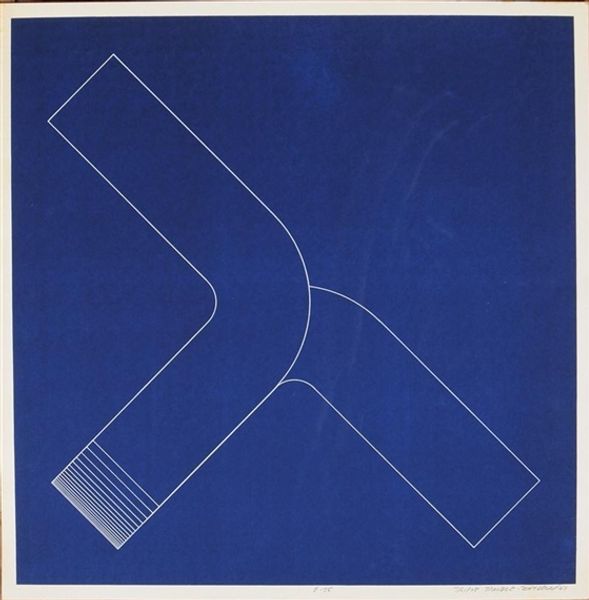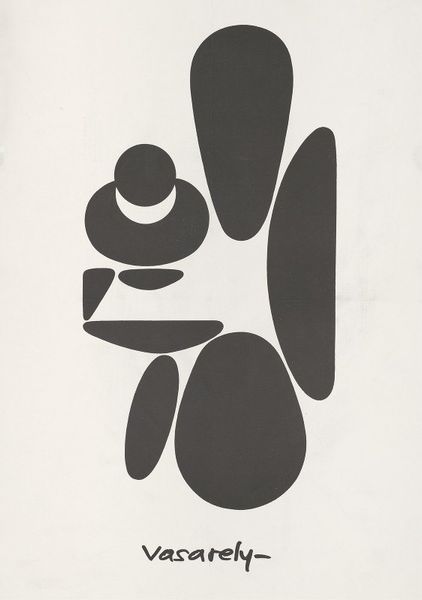
acrylic-paint
#
concrete-art
#
acrylic-paint
#
form
#
geometric-abstraction
#
abstraction
#
line
#
modernism
Copyright: Verena Loewensberg,Fair Use
Editor: This artwork is an untitled piece from 1948 by Verena Loewensberg, created with acrylic paint. It's a bold composition, these angular orange shapes set against a striking blue. I’m immediately drawn to the energy of it. How do you interpret this work? Curator: Its power resides, I think, in how these deceptively simple forms become potent symbols. Notice how the orange figure almost feels like a body in motion, captured mid-dance. Think of ancient fertility figures and how abstraction has historically conveyed those themes. Is this body emerging or dissolving? Consider that, psychologically, these shapes can act as a Rorschach test. Editor: So you see a figure... I was focusing more on the overall composition, seeing it as a study in geometric abstraction rather than something representational. Curator: Indeed, and the lack of direct representation is crucial. Yet, we're drawn to interpret the relationship between form and ground – that tension is where the symbolic power lives. Is it chaos or order? Loewensberg doesn’t offer any answers. Do you think that open endedness is intentional? Editor: It definitely makes me want to keep looking! The more I look the more possibilities there seem to be! Thank you! Curator: Precisely! It becomes a mirror reflecting back at us, showing what we expect of it. Ultimately that interplay allows for something more powerful than any direct meaning could provide. Thanks, this has provided food for thought for me.
Comments
No comments
Be the first to comment and join the conversation on the ultimate creative platform.
